Clean Rooms
A cleanroom is a controlled environment specifically designed to meet the needs of the user and the processes carried out within it.
A cleanroom is carefully planned to control both the number of airborne particles and their flow within the space.
There are various cleanroom classifications, defined by the number of particles per cubic meter.
The ISO cleanroom standard defines 9 levels, with:
ISO 9 being the lowest level of cleanliness — equivalent to a typical ambient environment — allowing 35,000,000 particles per cubic meter (at 0.5 micron in size).
ISO 1 being the highest level of cleanliness — allowing only 12 particles per cubic meter at 0.3 micron size.
A cleanroom is constructed using sterile, anti-bacterial materials, such as HPL, which do not emit dust particles. The air conditioning system operates in a closed loop, controlling the amount of fresh air entering the system and regulating the number of air changes per hour through HEPA filters.
This setup ensures control over the following parameters:
• Number of airborne particles per cubic meter
• Pressure control – positive or negative
• Humidity control via humidifier or chemical dehumidifier
• Temperature control
Types of Cleanrooms
There are different levels of cleanrooms, each classified by the amount of airborne particles — or in simple terms, by the cleanliness of the air.
Cleanrooms are categorized based on the number and size of particles allowed per unit of air volume.
According to the ISO 14644-1 standard (used in the U.S. and Canada), there are 9 cleanroom classes, ranging from ISO 1 (the cleanest) to ISO 9 (the least clean).
Even though ISO 9 is considered the “dirtiest” cleanroom level, it is still significantly cleaner than a regular room.
The cleanroom classification is based on micrometer-scale air sampling, which measures particle concentrations at sub-micron sizes.
Air cleanliness is achieved by passing the air through HEPA filters, which remove 99.997% of particles.
This is supported by airflow techniques such as laminar flow, where higher air exchange rates through the filters result in fewer particles remaining in the air.
The main airflow principles in cleanrooms are:
Laminar Flow – uniform, unidirectional airflow that moves in parallel layers with minimal turbulence
Turbulent Flow – mixed airflow used in lower classification cleanrooms where strict laminar control is not required
Positive Pressure – prevents contaminated air from entering the cleanroom
Negative Pressure – prevents contaminants from escaping the cleanroom
Air Changes per Hour (ACH) – the number of times the room’s air is replaced each hour to maintain cleanliness levels
HEPA/ULPA Filtration – ensures removal of particles from the circulated air
Cleanroom Planning
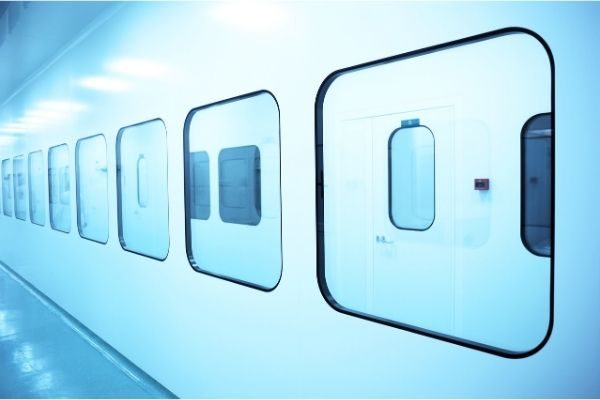
As you can see, planning cleanrooms is no simple task. Therefore, any organization seeking to establish a cleanroom professionally should enlist the services of huskytech– the leading company in the field of cleanroom design and construction.
Cleanroom Equipment Supply
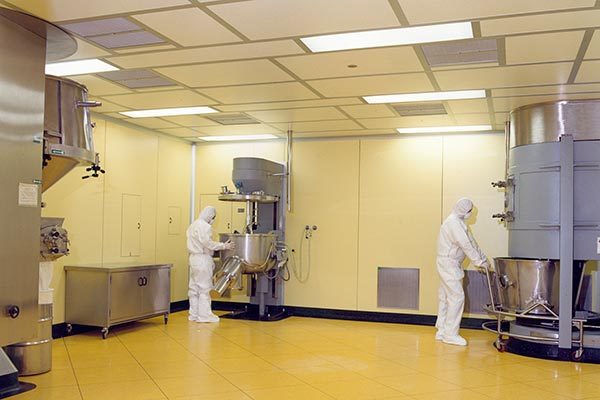
Cleanroom construction, typically located within larger facilities, involves creating controlled environments. In these rooms, materials, furniture, and equipment must be cleaned and maintained according to specific standards. Air quality is continuously monitored and maintained to meet defined particulate levels.
Finishing Works and Systems
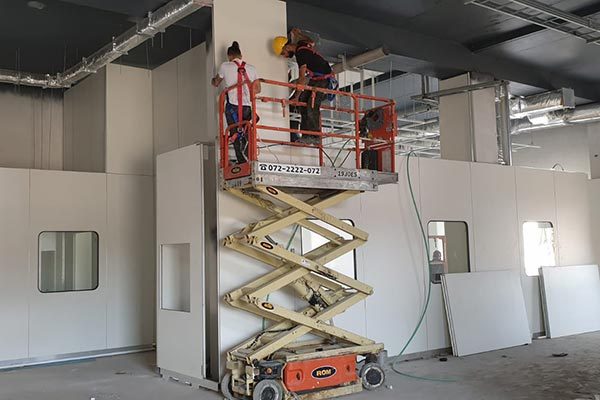
Our company has extensive experience in managing and executing high-quality finishing works, while adhering to schedules and maintaining budget constraints. We specialize in problem-solving and making improvements during execution, as well as coordinating effectively with planners and designers.
Cleanroom Planning

As you can see, planning cleanrooms is no simple task. Therefore, any organization seeking to establish a cleanroom professionally should enlist the services of huskytech– the leading company in the field of cleanroom design and construction.
Cleanroom Equipment Supply

Cleanroom construction, typically located within larger facilities, involves creating controlled environments. In these rooms, materials, furniture, and equipment must be cleaned and maintained according to specific standards. Air quality is continuously monitored and maintained to meet defined particulate levels.
Finishing Works and Systems

Our company has extensive experience in managing and executing high-quality finishing works, while adhering to schedules and maintaining budget constraints. We specialize in problem-solving and making improvements during execution, as well as coordinating effectively with planners and designers.
Design of Clean Rooms and Laboratories
Understanding the needs and requirements
The planning process begins with a thorough understanding of the client’s specific needs and regulatory requirements. Each industry and type of research demands different features in cleanrooms and laboratories. For example, the pharmaceutical industry requires an exceptionally sterile environment to prevent contamination, while the microelectronics industry demands an extremely low level of airborne particles.
Structural and Infrastructure Planning
After understanding the requirements, the next step is to plan the structure and infrastructure. This includes determining the location and size of the rooms, selecting appropriate construction materials, designing the ventilation and air conditioning systems, and organizing the internal logistical flow within the facility. Additional considerations include facility access, safety and security measures, and ongoing maintenance.
Ventilation and Air Conditioning Systems (HVAC)
The HVAC system is one of the most critical components in cleanrooms and laboratories. It must be designed to provide a consistent flow of clean air, maintain specified temperature and humidity levels, and effectively filter out particles and contaminants. Appropriate filters, such as HEPA or ULPA, must be selected based on the room’s cleanliness requirements.
Understanding Needs and Requirements
The selection of materials and construction methods for cleanrooms and laboratories is critical to maintaining a contaminant-free environment. Materials such as stainless steel, specialized plastics, and tempered glass are commonly used due to their ease of cleaning and resistance to contamination. It is essential to ensure construction avoids sharp corners and crevices to prevent the accumulation of contaminants.
Validation of Clean Rooms and Laboratories
Validation is a critical process that ensures the cleanroom or laboratory operates in accordance with established standards and requirements. The process includes several stages:
Validation Process
IQ (Installation Qualification) Tests: Verification that all systems and equipment have been installed according to the specifications and design.
OQ (Operational Qualification) Tests: Testing the functionality of all systems and equipment under defined operating conditions.
PQ (Performance Qualification) Tests: Evaluating the performance of systems and equipment under real-world conditions to ensure compliance with cleanliness and safety requirements.
Particle and Contamination Testing
In cleanroom validation, testing for airborne particles and contaminants is critical. Advanced measurement instruments, such as laser particle counters, are used to assess the particle concentration in the air. In addition, microbiological testing is conducted to detect the presence of microorganisms.
Ventilation and Air Conditioning Systems (HVAC)
Validation is not a one-time process. Periodic testing must be conducted to ensure that the cleanroom or laboratory continues to operate according to required standards. This ongoing process includes routine maintenance, regular inspections of HVAC systems, and testing of air quality and equipment performance.
Materials and Construction
The selection of materials and construction methods for cleanrooms and laboratories is critical to maintaining a contaminant-free environment. Materials such as stainless steel, specialized plastics, and tempered glass are commonly used due to their ease of cleaning and resistance to contamination. Construction must avoid sharp corners and crevices to prevent the accumulation of contaminants.
What Else Should Be Taken Into Account When Building a Clean Room ?
Processes Requiring Expertise and Precision
In the planning and construction of cleanrooms and laboratories, risk management and emergency planning are critical. All potential risks must be identified, and appropriate response and mitigation systems must be designed accordingly. This includes advanced fire suppression systems, safe evacuation routes, and preparedness for biological or chemical emergencies.
Integration of Advanced Technologies
Integrating advanced technologies such as automation and artificial intelligence (AI) into cleanrooms and laboratories can significantly enhance efficiency and precision. Automated systems for air quality monitoring, robots for cleaning and disinfection, and AI-driven data analysis and maintenance forecasting can reduce human error and improve overall performance.
Employee Training and Qualification
Employee training and qualification is a critical step in ensuring the proper and safe operation of cleanrooms and laboratories. Staff must be familiar with the required protocols and procedures, including cleaning processes, the use of personal protective equipment (PPE), and basic operational guidelines for HVAC systems.
Ongoing Maintenance Management
Routine maintenance of cleanrooms and laboratories is essential to ensure system functionality and maintain environmental quality. Scheduled maintenance programs should include cleaning, inspections, and repairs of HVAC systems, filter replacements, calibration of measurement instruments, and monitoring the condition of electrical and plumbing systems.
Standards and Regulations in Clean Room Construction
Processes Requiring Expertise and Precision
The planning, construction, and validation of cleanrooms and laboratories are complex processes that require expertise and precision. From understanding the needs and requirements, through meticulous design and execution of the construction phases, to a rigorous validation process—each stage is critical to ensuring a clean and safe environment. By applying best practices and integrating advanced technologies, cleanrooms and laboratories can meet the strict standards of various industries, contributing to exceptional performance and cutting-edge research.
International Standards
Cleanrooms and laboratories are required to comply with various international standards, such as ISO 14644 for cleanrooms and ISO 17025 for laboratories. These standards define the requirements for cleanliness, validation testing, and maintenance procedures. Compliance with these standards is essential to ensure the quality and reliability of production and research processes.
Local Regulations
In addition to international standards, compliance with local regulations of various countries is also required. These regulations may include additional requirements related to safety, health, and environmental protection, and may involve obtaining regulatory approvals from relevant government authorities.
Principles for Designing and Constructing a Clean Room
A cleanroom is an isolated and controlled environment where cleanliness levels and environmental parameters are strictly regulated to minimize external contamination and ensure optimal conditions for sensitive processes and production. These rooms are commonly used across various industries, including electronics, pharmaceuticals, biotechnology, and more. Successful cleanroom construction requires careful attention to several essential design and operational principles.
The first step in cleanroom design is defining the specific requirements for the room, including the required cleanliness level, which is determined by the maximum number of particles allowed per cubic meter of air. These levels are categorized according to ISO Classes 1 to 9, each specifying a maximum allowable particle concentration. It is also essential to consider the different types of contamination—biological, chemical, and particulate—and design the room accordingly.
Following this, the selection of air filtration and conditioning systems plays a central role in minimizing airborne particles. A custom-designed HVAC (Heating, Ventilation, and Air Conditioning) system should include HEPA or ULPA filters capable of capturing particles ranging from macro to nanometer scale. This system must ensure frequent air changes to maintain the required cleanliness level at all times.
Additionally, the structural and infrastructure design of the cleanroom must aim to minimize dust and internal contamination. It is recommended to use non-shedding, easy-to-clean materials such as epoxy flooring and smooth ceiling panels. The room layout should support optimal airflow operation, preventing stagnation of clean air. This includes developing well-designed airflow pathways that effectively direct contaminated air out of the room.
In addition, strict maintenance and cleaning protocols must be implemented and regularly performed within the cleanroom. Cleaning should be carried out using methods and materials that do not introduce additional contaminants into the environment. All cleaning and maintenance equipment must be specially designed and carefully selected to suit cleanroom standards.
To maintain compliance with international standards and ensure consistent cleanliness levels, it is highly recommended to integrate advanced monitoring systems. These systems continuously measure particle levels and other environmental parameters within the room. Any abnormal variations must be promptly analyzed and addressed to prevent disruption to ongoing processes.
Lastly, the training and education of personnel working inside the cleanroom are essential for preserving its cleanliness. Workers must be fully aware of cleanroom behavior protocols and receive instruction on the proper use of protective clothing, cleaning procedures, and general conduct that minimizes contamination risks.
Establishing a cleanroom is a complex process that requires meticulous planning and attention to a wide range of details. When the above principles are properly applied, a cleanroom can be created that provides optimal conditions for operations requiring high levels of cleanliness and environmental control.
Among Our Satisfied Clients
Clean Rooms Magazine

The Guide to Building Cleanrooms in Sensitive Industries
The Guide to Building Cleanrooms in Sensitive Industries Cleanrooms are a cornerstone of industries that require manufacturing under strict, controlled conditions. They provide a sterile environment that prevents the intrusion of even the tiniest contaminants — particles that could compromise the production or inspection of highly sensitive products. From microchip
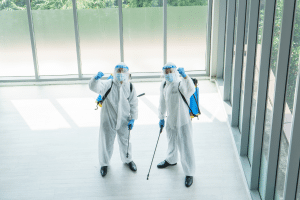
Cleanrooms in the Israeli Industry: Strict Standards, Competitive Advantage
Cleanrooms in Israeli Industry: Strict Standards, Competitive Advantage The modern industrial world operates under increasingly stringent quality, safety, and precision requirements. One of the key ways to ensure the cleanliness, sterility, and accuracy needed in advanced manufacturing is through the use of cleanrooms. As a global leader in technology and

The Role of Cleanrooms in Hospitals
Cleanrooms in Hospitals: A Critical Element in Modern Healthcare The modern industrial world operates under increasingly stringent demands for quality, safety, and precision. One of the key tools for ensuring cleanliness, sterility, and environmental control in advanced manufacturing is the use of cleanrooms. In hospitals, these rooms play a crucial

Cleanrooms – Importance, Standards, and Applications
A cleanroom is a controlled work environment where strict conditions of cleanliness, temperature, humidity, and particle levels are maintained to prevent contamination of sensitive products. Cleanrooms are commonly used in industries such as pharmaceuticals, microelectronics, biotechnology, and others where a sterile environment is essential for ensuring product quality. The use
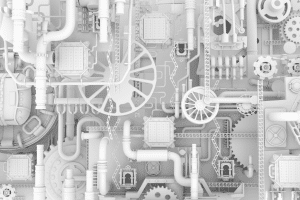
What is a clean room?
A clean room is a meticulously controlled and organized environment designed to perform sensitive processes under highly sterile conditions. In modern industry, clean rooms are an integral part of operations in sectors such as pharmaceuticals, electronics, food production, and aerospace. The core concept behind a clean room is to prevent

Use of Clean Rooms in Medicine: Ensuring High Standards of Health and Technology
Clean Rooms in Medicine: Ensuring High Standards of Health and Technology Clean rooms play a critical role in the medical world, where precision and quality are essential for success. From drug manufacturing to the development of advanced medical technologies, clean rooms provide a sterile environment that enables compliance with the
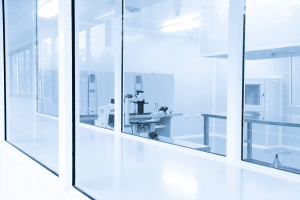
Use of Clean Rooms in the High-Tech Industry: The Standard of Technological Excellence
Clean Rooms in the High-Tech Industry: The Standard of Technological Excellence Clean rooms are a vital component of the high-tech industry, particularly in areas such as chip manufacturing, laser technology development, and the assembly of advanced electronic components. With the constant demand for high precision and relentless technological innovation, clean
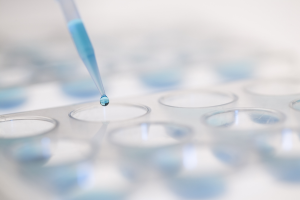
Use of Clean Rooms in Israeli Industry: Advanced Technological Solutions
Clean rooms are an integral part of many industries in Israel, including electronics, biotechnology, pharmaceuticals, and food production. With the growing demand for uncompromising quality and strict adherence to manufacturing standards, clean rooms provide a controlled environment where contamination levels, temperature, and humidity can be precisely regulated. This article explores
















